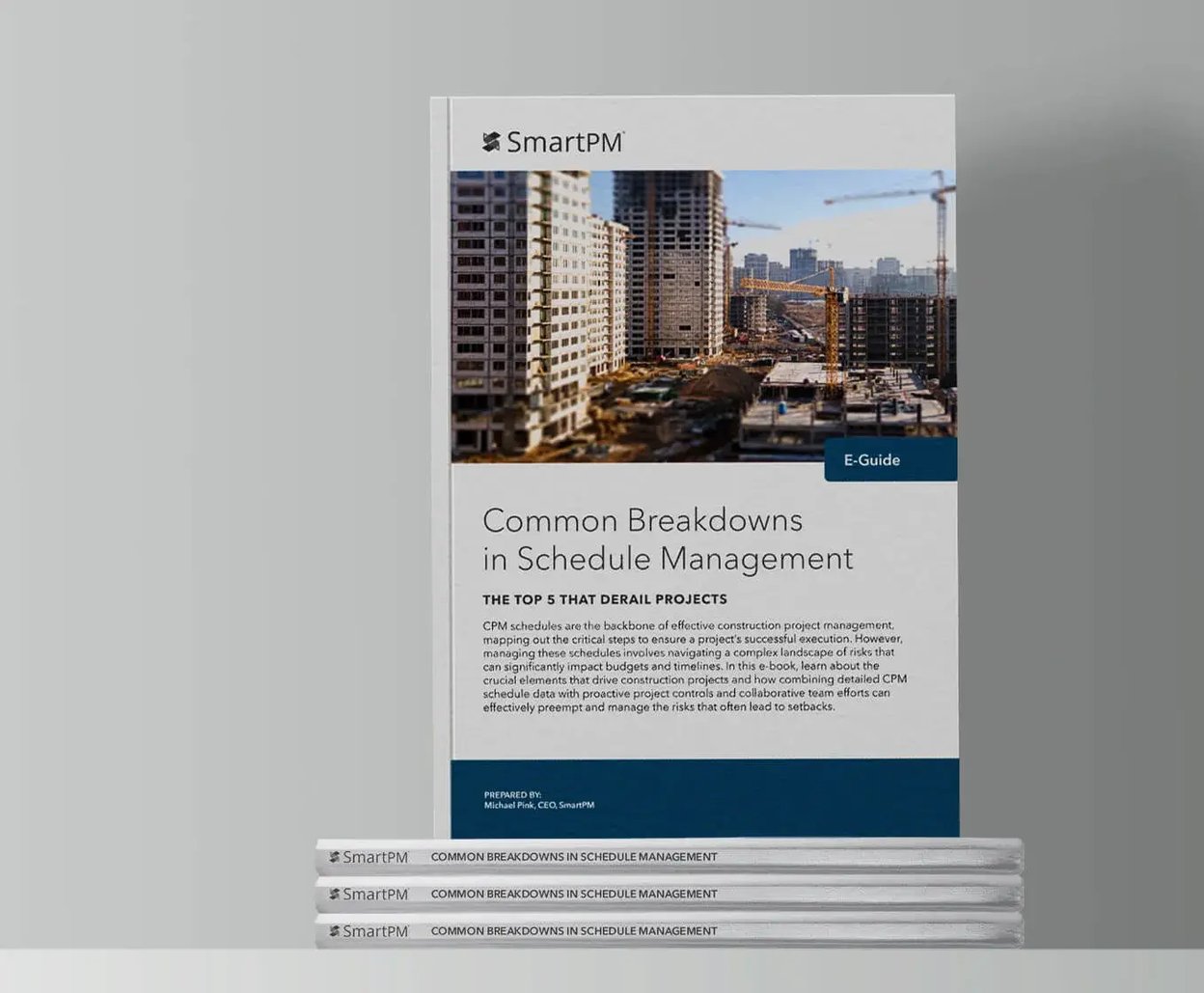Manhattan Construction Company
Schedule Analysis Software from SmartPM Really Clicks With Manhattan Construction
Globe Life Field – New Home of The Texas Rangers | Arlington, Texas

Manhattan Construction Company
THE CHALLENGE
Up until recently, if you talked project updates and schedule analysis with Joe Mannon, Director of Scheduling for Manhattan Construction Company, one number would keep coming up: 250.
That’s the number of mouse clicks, on average, that it took Mannon and his fellow scheduler Chris Smith to enter the schedule data analytics for the monthly updates on each of the 80-90 ongoing projects and publish them for review. That’s a recipe for Carpal Tunnel Syndrome if there ever was one.
The problem wasn’t Mannon or Smith, or anyone else – it was the system. To say it was inefficient was a major understatement. The saga began eight years ago with a request from management to identify a cost-effective, dependable schedule analysis platform that would provide Mannon and his team with actionable data on delays, overruns, and budget issues. After performing his due diligence, Mannon recommended a program he felt would be a real problem-solver.
The product performed reasonably well. One of its shortcomings, unfortunately, was its inability to share the insights it produced. This was a standalone product for which Manhattan held just two licenses. Consequently, it was not possible to share the information within the organization.
“It’s a good product if you’re doing schedule analysis for your own benefit,” said Mannon, who began working at Manhattan Construction way back in 1975 as a draftsman for the scheduling department.
“The challenge was how to get all the terrific information we were extracting and effectively share it with 400–500 of our people – project managers, supers, administrative staff and, naturally, leadership.
“Ultimately, we needed to format it all into something our teams could read. After four months, we finally created something that did the job. We also created a monster.”
The beast that Mannon refers to is a system that he had cobbled together from seven different software packages. There is no need to describe the process in painstaking detail. Suffice to say it incorporated a truckload of data input from the teams’ myriad updates, screen capping, and customized Excel templates, topped off with entry into the company’s SharePoint system. And, of course, that nightmarish number of mouse clicks.
What’s worse, this convoluted process resulted in far too much time spent assembling the reports and not nearly enough time studying them – looking at what activities were, for instance, slipping, lacking logic, or had a high duration count. As a result, many of the projects being built by Manhattan field staff had lower-quality schedules than desired, culminating in delays and budget overruns. Additionally, Manhattan was contemplating a dive into some advanced business intelligence initiatives and was not convinced that their current product was capable of taking them in that direction.
This certainly was not a system befitting a company like Manhattan, which boasts over $30 billion in its impressive construction portfolio, along with a reputation for reliable performance and quality results. Recognized for “Building Excellence,” Manhattan Construction consistently ranks as a top construction firm by the Engineering News-Record (ENR).
Determined to get their schedule analysis trainwreck back on the tracks, Mannon began a search which led him to the discovery of SmartPM, an Automated Project Controls Platform and Schedule Analytics software program. It leverages billions of data points hidden in a project schedule to automate schedule and product reviews while extracting insights that can help mitigate risk, control costs, and increase profitability.
Intrigued, he requested a demonstration of SmartPM’s capabilities. To that end, he provided SmartPM with the schedule files for a project that was delayed four to five months past its contractual date. But the files were only from baseline to mid project – in other words, just 50% of the files. What Mannon saw next was nothing short of amazing.
THE SMART SOLUTION
“The program only took a few minutes to analyze the provided data,” Mannon recalled. “It showed us some interesting trends related to day production, data quality, things like that. But what was truly eye-opening thing was when SmartPM spit out a predicted end date at the 50% mark that came within one day of the actual end date. That’s what sold me on the product: knowing where your project is going to finish up with a high degree of certainty.
“Our schedules tell us where a project is and outlines the next set of tasks on the job. SmartPM sees your progression on a daily basis over a period of months, then predicts where you’re going to end up, while pointing out the potential trouble spots.”
Mannon and Smith have been using SmartPM since October 2021. While the list of benefits is virtually endless, Mannon points to the most obvious.
“From a selfish perspective, I no longer need to put in 10- to 12-hour workdays for over two weeks every month producing our reports,” he said. “From a company perspective, we can effortlessly share these insightful, web-based analytics throughout the organization, ensuring that everyone has quick access to their project’s most current status.”
But Mannon contends it’s what can be accomplished once the data are available that has left the biggest impact. Previously, all he could do was complete the reports, inform everyone they were available, and encourage the teams to log into SharePoint and review them. But with so many other things demanding their attention, the teams often weren’t looking at the data, much less acting on it. And so, month after month their jobs had the same problems that plagued them for the previous three to four months.
This is where the new analytics process really flexed its muscle.
“SmartPM produces its insights so quickly, we gained back more time to perform actual analysis. That means we’re able to provide explicit insights to our teams about what issues require corrective action.
“Down the schedule pipeline, a general contractor might ask me why their schedule has a failing grade compared to other projects on the dashboard. I can confidently say, ‘Here’s the report explicitly showing you this problem. If you want to improve your quality score, you need to get these things cleaned up before you submit your next schedule.”
The interactivity of SmartPM is a particularly attractive feature. Manhattan Construction users can click on different items in the dashboard and watch graphs grow and update in front of their eyes, in real-time. The schedule insights offered by SmartPM include a grading scale that Mannon has found helpful in communicating the importance of schedule quality to his team.
There was one specific feature that Mannon felt compelled to highlight.
“Our people love the Quality Checker,” he noted. “All you do is drop your file in, it runs through a rapid analysis, then it spits out a report about the file. It’s sort of like a ‘cleanser’ – it looks at the schedule, tells you what to clean and fix, after which you simply resubmit your file.”
THE RESULTS
Since implementing SmartPM, Manhattan Construction’s project teams can see actionable insights across all divisions from the C-suite to the site teams. Working with realistic timeframes and accurate data has empowered Manhattan’s project stakeholders to make better decisions and catch problems early.
Mannon also had some quantifiable results to share.
“SmartPM has helped us cut down our schedule analysis processing time by a minimum of 75%,” he asserted. “I can do in 10 minutes what used to take me an hour.
Mannon has also seen a number of qualitative results as well.
“Based on the intelligence it generates, our team has gradually learned how to create higher-quality schedules up front. When you see the same issues and concerns constantly cropping up, you get a sense of where the problems originate, and you can begin to modify your approach to schedule creation.”
When Mannon began working in the scheduling arena almost a half-century ago, construction schedules were hand-drawn onto big rolls of grid paper. Around the turn of the millennium, computer software began to be implemented into construction scheduling. Yet without a tool for detailed schedule analysis, computerized scheduling systems were not significantly more effective than the ones from Mannon’s original hand-drawn files.
It’s not hyperbole to claim that SmartPM changed the schedule-analysis landscape – at least for Mannon.
“If you see a wreck coming and you have 500 feet instead of 50 feet to stop, you will be in better shape. That’s what SmartPM does. Although the metrics and graphs are interactive and well-designed, predictive analysis is what sold me right away.”
That, and the fact that his mouse lasts a heck of a lot longer.
"If you see a wreck coming and you have 500 feet instead of 50 feet to stop, you will be in better shape. That's what SmartPM does."

About Manhattan Construction Company
In 1896, Manhattan Construction Company began its family-owned enterprise in Oklahoma. Five generations later, Manhattan Construction Company has over $30 Billion in its impressive construction portfolio surrounding North America, attesting to a reputation of reliable performance and quality results. Recognized for “Building Excellence,” Manhattan consistently ranks as a top construction firm by the Engineering News-Record (ENR).







